Tadcaster, West Riding of Yorkshire
Up to 1834
Up until the 1860s, the two parishes of East and West Tadcaster had quite different arrangements for poor relief. From 1826, East Tadcaster was a member of the Barwick-in-Elmet Gilbert Union and made use of the Union's workhouse, a row of cottages at Barwick. West Tadcaster, on the other hand, operated its own workhouse — a fine town house on the east side of St Joseph's Street.
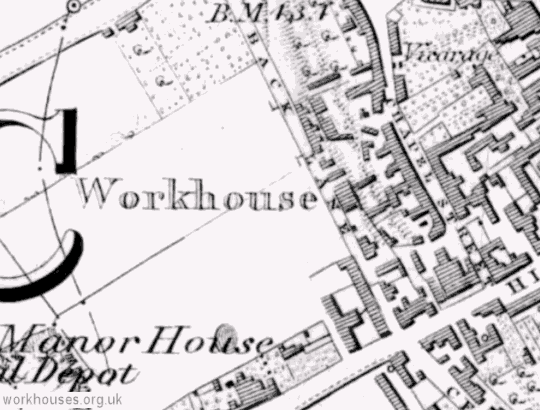
West Tadcaster workhouse site, 1849.
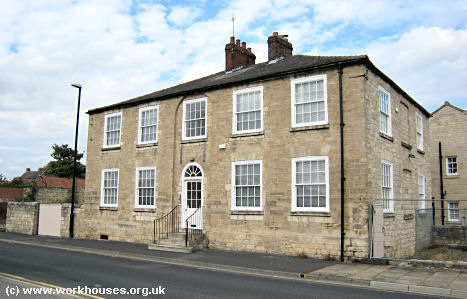
Former West Tadcaster workhouse, 2009.
© Peter Higginbotham.
A poorhouse was in operation in the 1840s on Lotherton Lane, between Aberford and Lotherton.
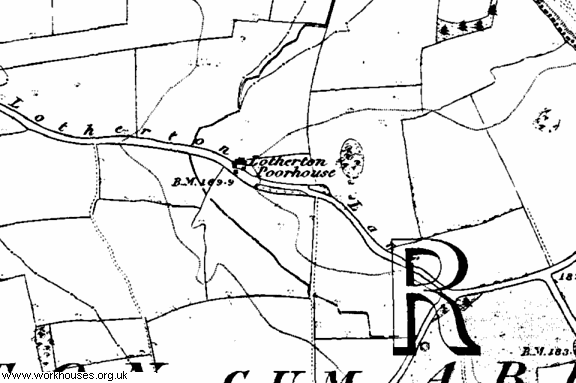
Lotherton poorhouse site, 1849.
After 1834
The formation of new Poor Law Unions in West Yorkshire was severely hindered by the existence of four Gilbert Unions (Barwick, Carlton, Great Ouseburn and Great Preston) whose constitution had made them exempt from the provisions of the 1834 Poor Law Amendment Act. The scattered distribution of these Gilbert Unions cut across the neat pattern of Poor Law Unions proposed by the Poor Law Commissioners as shown on the map below.
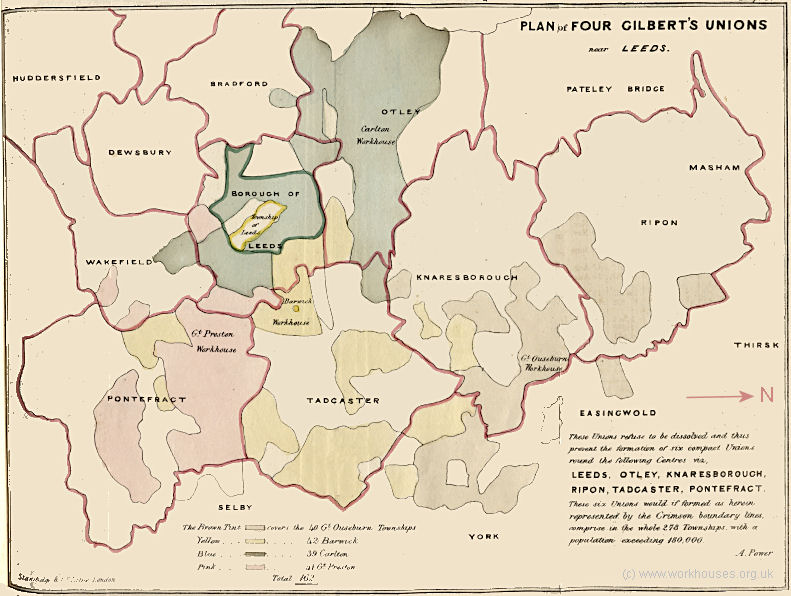
Yorkshire Gilbert Unions map, 1838.
© Peter Higginbotham.
It was not until 1850s that the Commissioners' scheme began to take place with the formation of the new Unions of Ripon (1852), Knaresborough (1854), Wharfedale (1861), Wetherby (1861), and Tadcaster (1862).
The Tadcaster Union was officially created on 22nd February 1862. Its 15 member parishes (and number of guardians representing each, if more than one) were:
Aberford (2), Austhorpe, Colton, Grimston, Huddleston and Lumby, Kirkby Wharfe with North Milford, Lead Hall, Lotherton cum Aberford (2), Newthorpe, Oxton, Parlington, Sturton Grange, Sutton with Hazlewood (2), Towton, and West Tadcaster (3).
These were joined in 1869 by:
Acaster Selby, Allerton Bywater, Appleton Roebuck, Askham Bryan, Barkstone Ash, Barwick in Elmet, Bilbrough, Bolton Percy, Catterton, East Tadcaster, Garforth, Great and Little Preston, Kippax, Kirk Fenton, Ledsham, Ledstone, Micklefield, Newton Kyme with Toulston, Ryther cum Ossendyke, Saxton with Scarthingwell, and Sherburn.
In 1865, the West Tadcaster workhouse was the subject of scandal which came to light following the funeral of pauper Elizabeth Daniel. A report in the Tadcaster Post in February 1865 gave an account of the funeral procession. This began with the deceased's body being taken to the churchyard on a chimney sweep's donkey cart followed by a horse drawn cart carrying an effigy of the workhouse Matron, Catherine Leivers, which was later burnt on a bonfire. The procession was accompanied by the Tadcaster Drum and Fife band with a crowd of some 1500 to 2000 people said to be there. Mrs Leivers was dismissed after being found to be guilty of drunkenness, cruelty to the elderly inmates, and abuse of the children, although was allowed to remain in charge until the workhouse was closed on 25 March.
The Barwick in Elmet Gilbert Union was dissolved in 1869, many of its member parishes became part of the Tadcaster Union, which also took over the Barwick in Elmet workhouse.
A new Tadcaster Union workhouse was opened in 1872 on a site to the west of Tadcaster, at the south side of Station Road. It had an entrance block at the south containing a board-room, porter's lodge and casuals' wards. To the rear was the H-shaped main building, with hospital, mental and isolation blocks at the north. The site location and layout are shown on the 1909 map below.
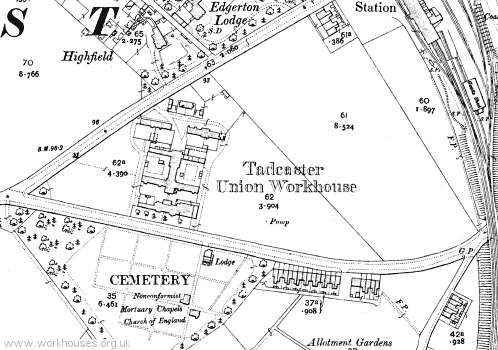
Tadcaster workhouse site, 1909.
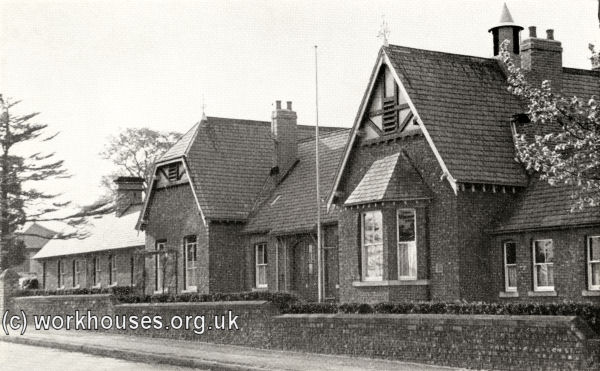
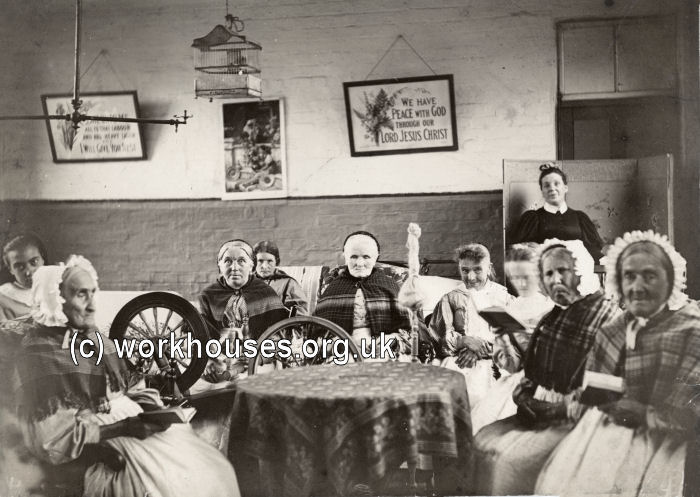
Tadcaster Union workhouse, date unknown. © Peter Higginbotham.
Elderly female inmates of Tadcaster workhouse, c.1900.
© Peter Higginbotham.
In 1930, the workhouse came under the control of the West Riding County Council. Its layout at this date are shown on the plan below.
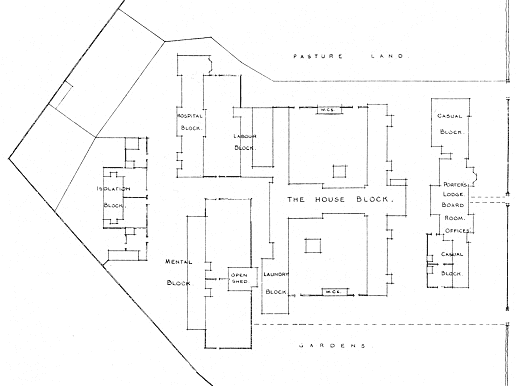
Tadcaster site plan, 1930.
The former workhouse became used a geriatric hospital and later as an old people's home known as The Beeches. The building was demolished in 1987.
Cottage Home
In the early 1900s, the Tadcaster Union established a children's cottage home on Main Street, Bilbrough. In 1924, the home could accommodate 28 children, with Henry James as its Superintendent. The property is now a private residence.
Staff
Inmates
Records
Note: many repositories impose a closure period of up to 100 years for records identifying individuals. Before travelling a long distance, always check that the records you want to consult will be available.
- North Yorkshire County Record Office, Malpas Road, Northallerton DL7 8TB. Few records survive — holdings include: Guardians' minutes (1862-7); Ledgers (1862-1930); etc.
Bibliography
Links
- Ripon Workhouse Museum and Garden, Sharow View, Allhallowgate, Ripon HG4 1LE.
Acknowledgments
- Thanks to Margaret Garrod for information on the 1865 Tadcaster workhouse scandal.
Unless otherwise indicated, this page () is copyright Peter Higginbotham. Contents may not be reproduced without permission.


